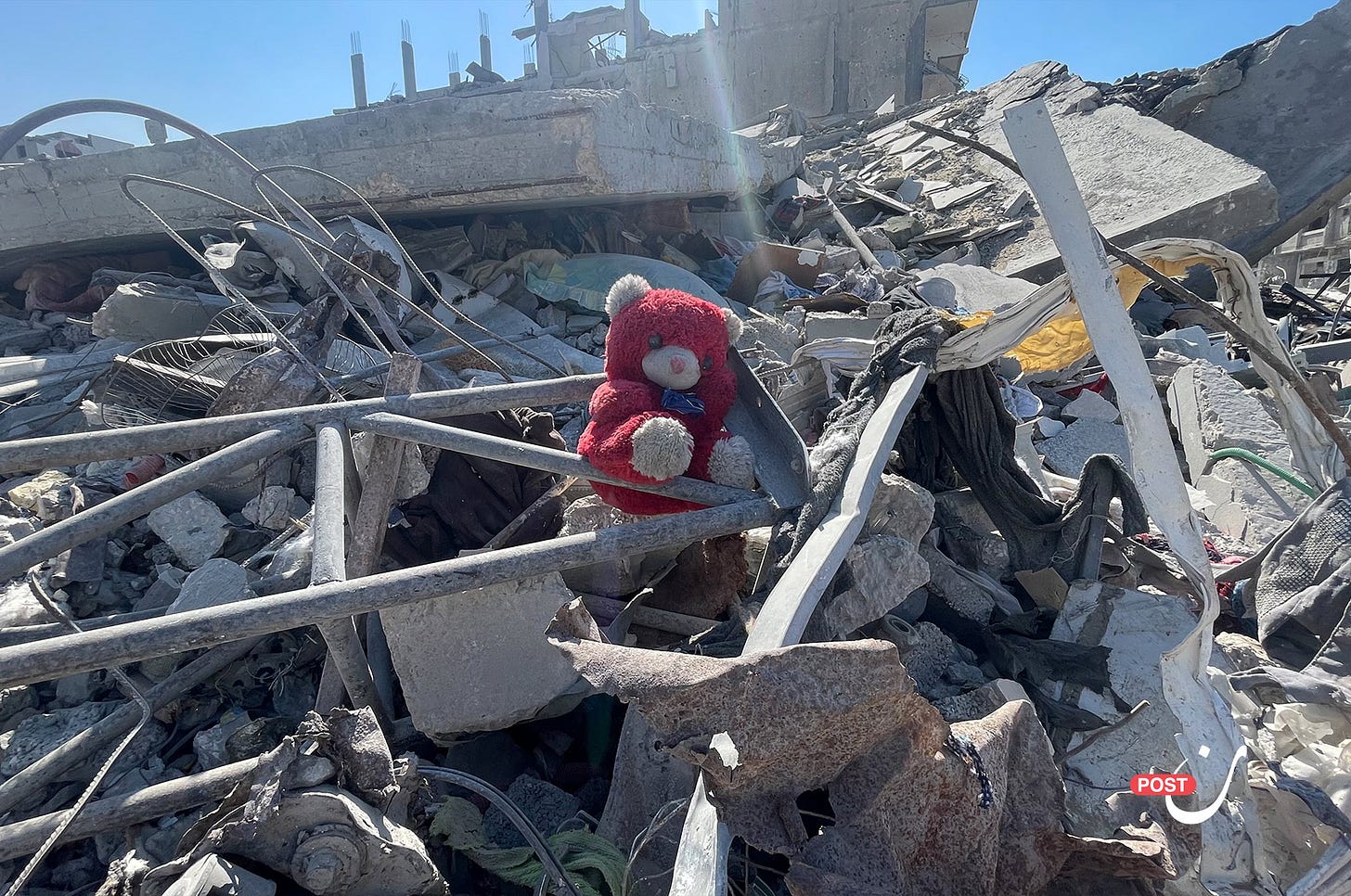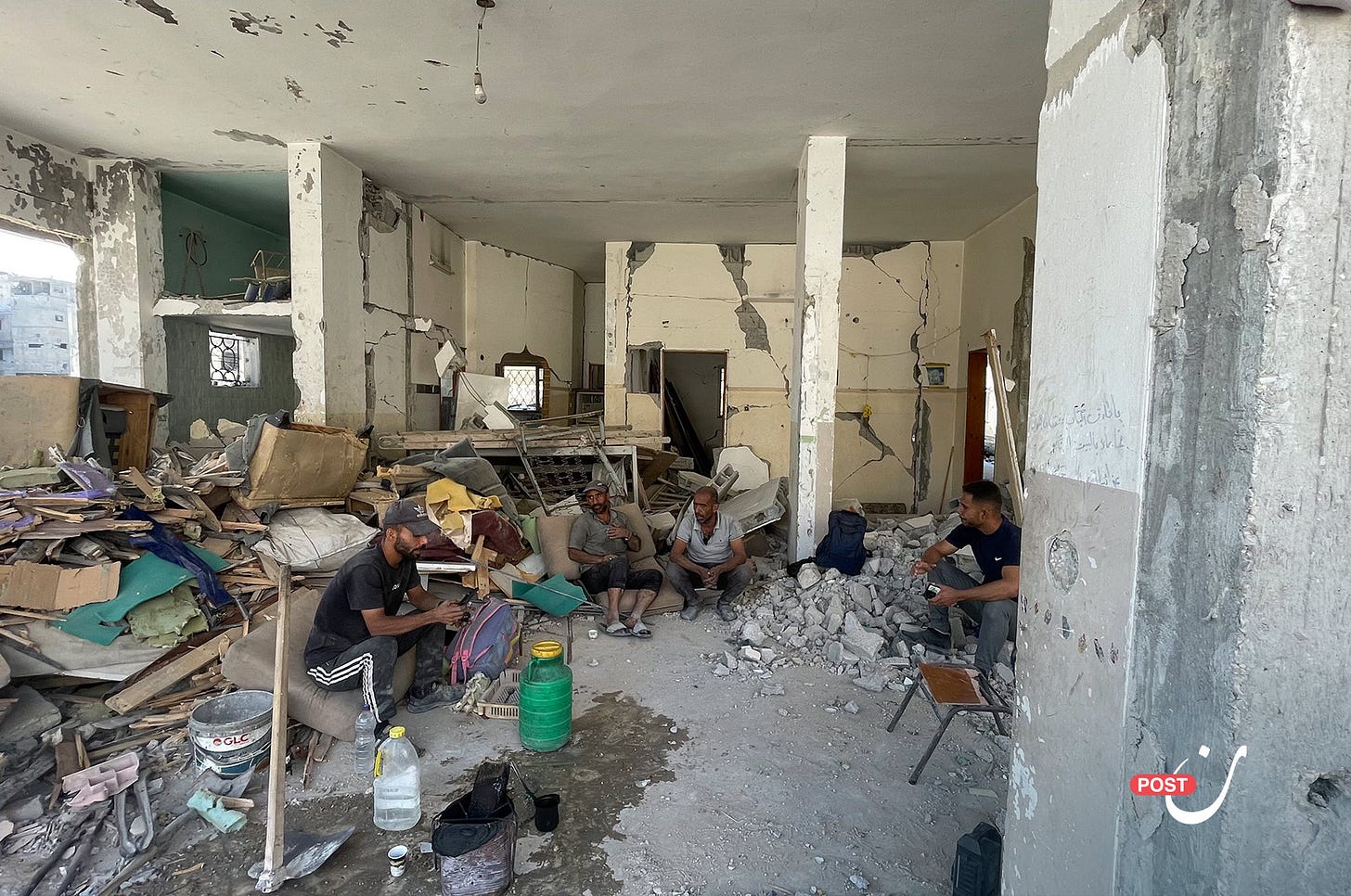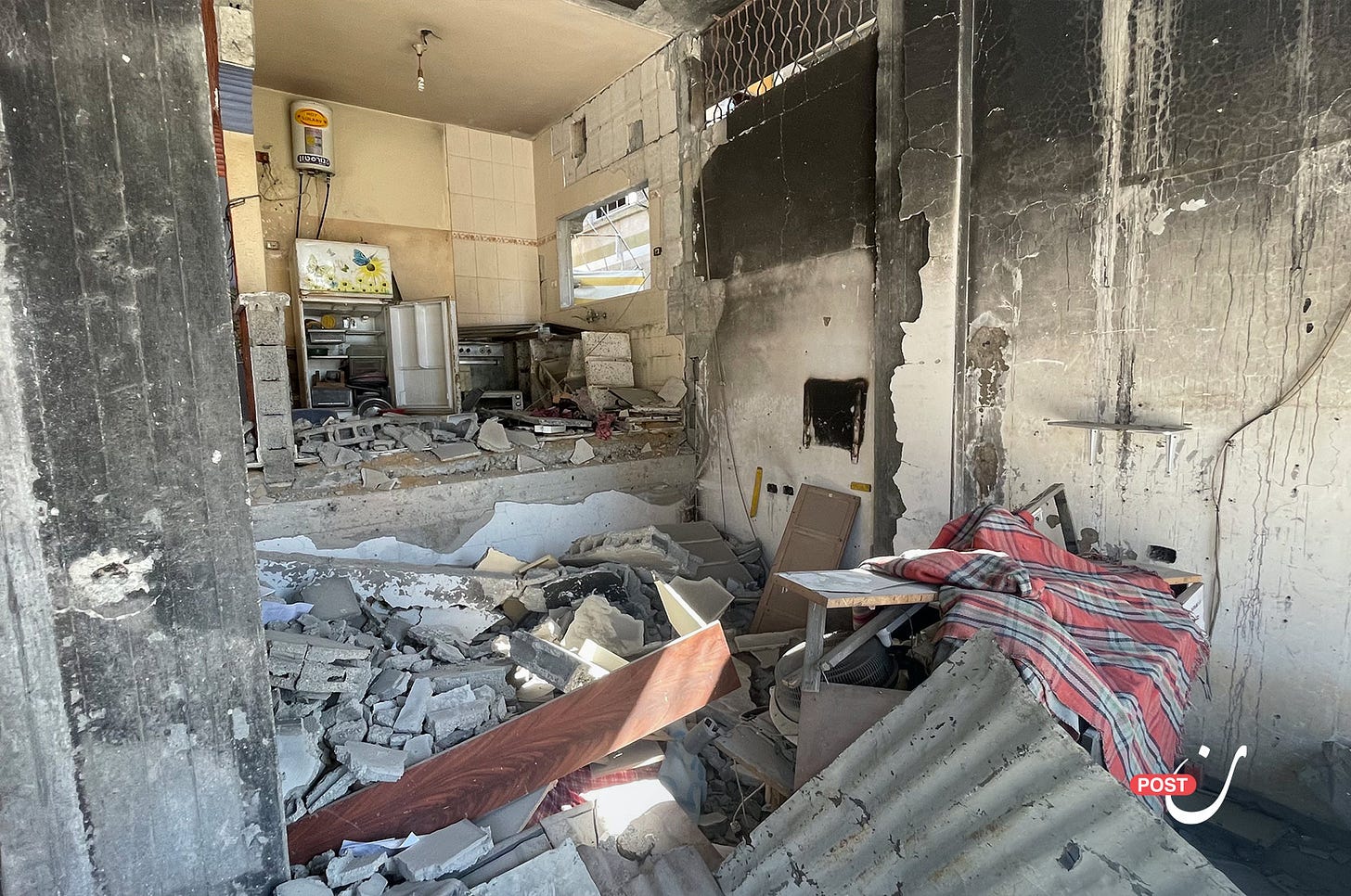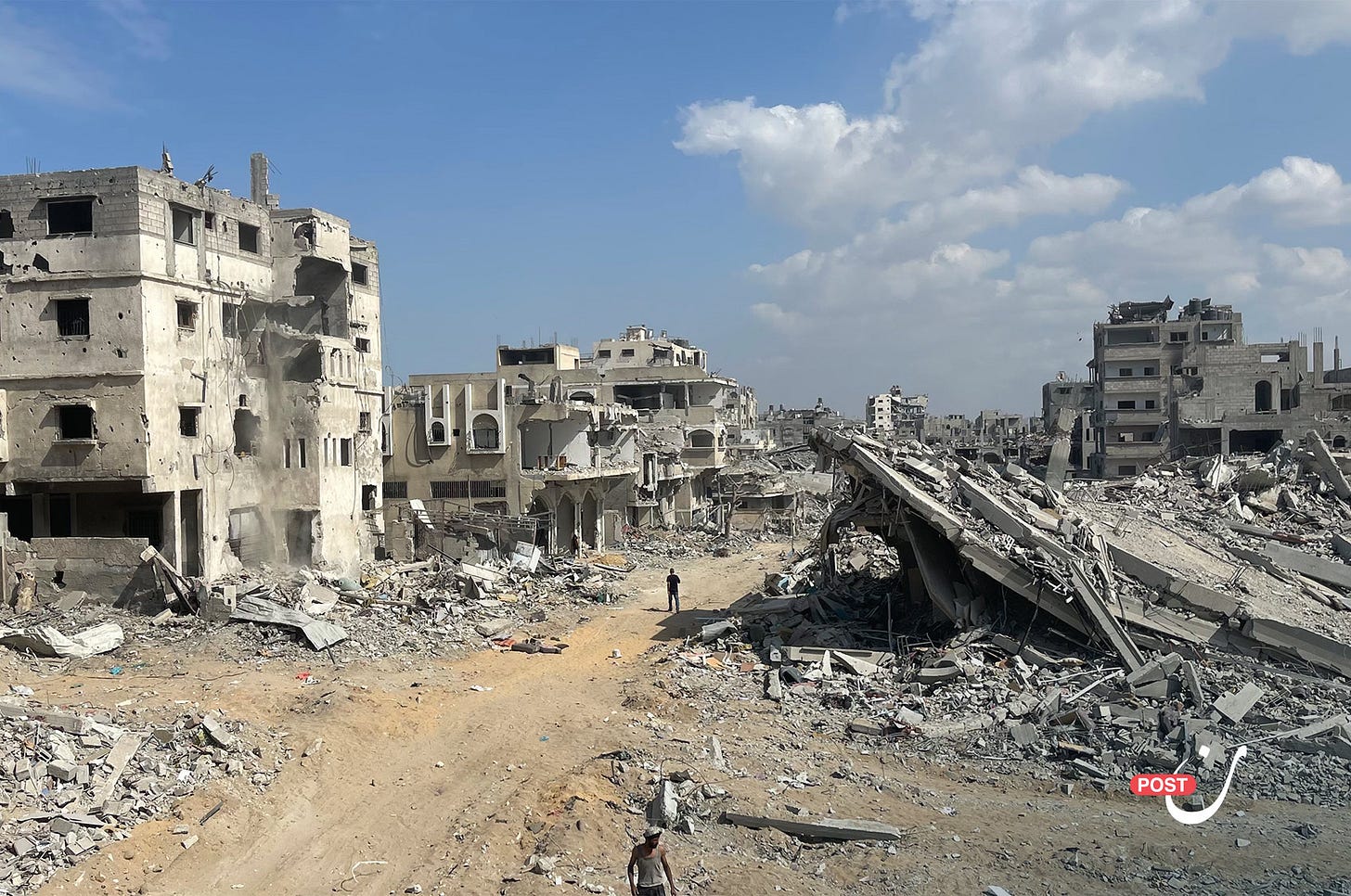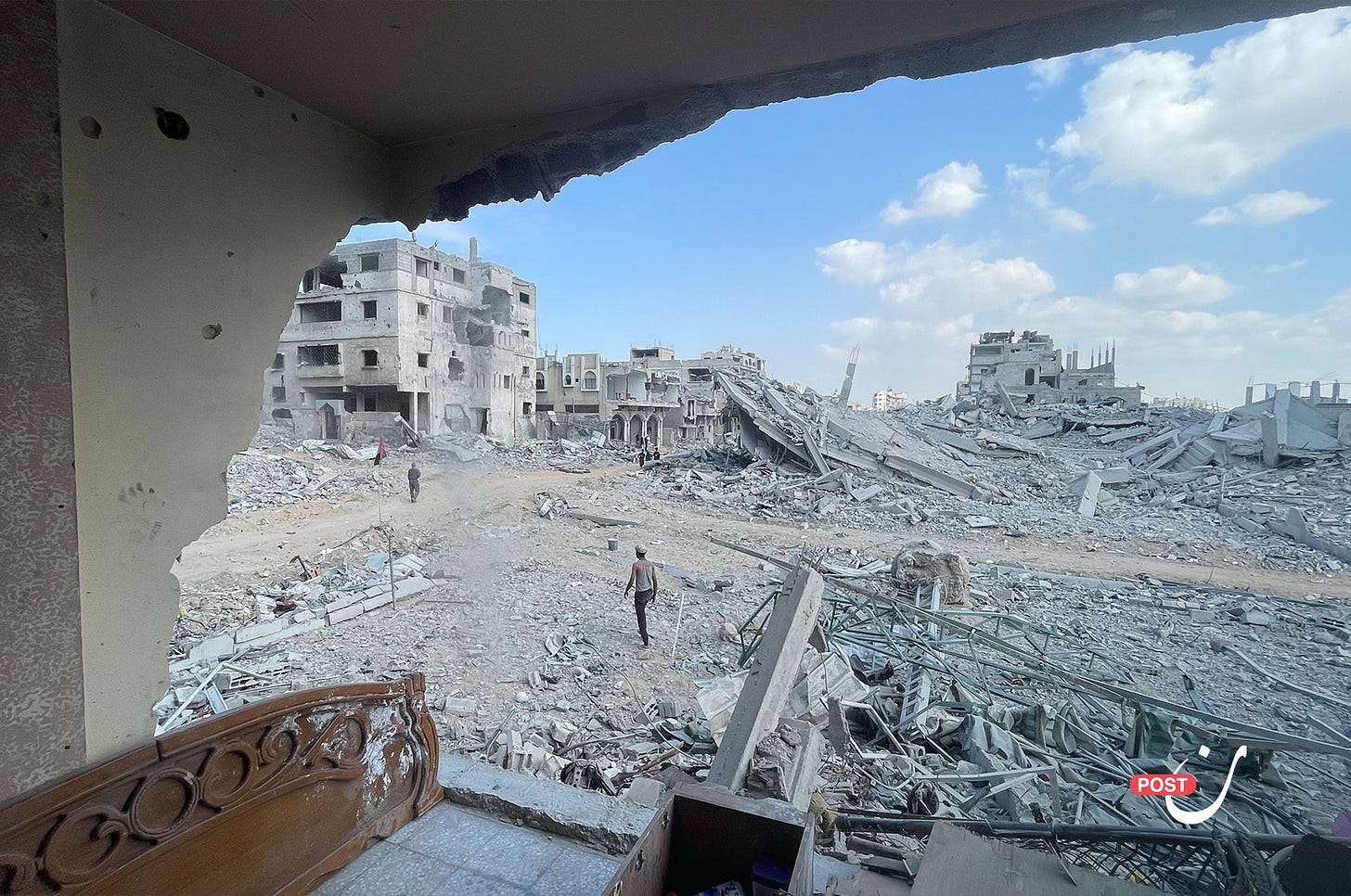Amid the rubble of their homes and the suffocating silence that follows devastation, Gaza’s survivors stand on the ruins of what remains of their lives not merely as victims of a war that has ended, but as witnesses to a destruction that still clings to them.
In neighborhoods such as al-Jalaa, Sheikh Radwan, and the eastern parts of the city, it takes little time to realize that life here is measured not only by the number of casualties, but by the dreams crushed beneath the debris.
Enduring Amid Destruction
In the heart of Gaza City’s al-Jalaa district, where the scent of dust mingles with that of memories, 42‑year‑old Abdullah Herz has returned to his partially destroyed home after spending weeks displaced in Deir al‑Balah, in the center of the Strip. Yet his homecoming was nothing like he imagined.
“I never thought I’d come back alone,” he tells Noon Post. “I used to dream of returning with my wife and our three children but they’re gone. The house isn’t a home anymore, and the neighborhood isn’t a neighborhood.”
What was once a family home has become a cluster of slanted walls no doors, no windows, no water, no electricity, not even the barest means of life. Still, Abdullah chose to stay.
“I couldn’t stay in Deir al‑Balah any longer,” he says. “People there were kind, but I was exhausted. I wanted to be close to them - to their memory - even if under the rubble.”
He describes the scene around him: “Life here doesn’t exist. No water, no sewage, no infrastructure. The main street is all rubble no cars, no people.”
Every corner of his ruined home brings back images and voices from the past. “This corner used to be the boys’ room,” he says softly. “Here, their mother would sit and make us tea. And now? Just silence.”
He exhales deeply. “At night, there’s no light, no safety. But I refuse to leave. This is my place. This is my home even without a roof.”
Despite everything, Abdullah fears that the world will forget Gaza’s suffering now that the fighting has stopped. “People are focused on rebuilding stone,” he says. “But who will rebuild the people? Who will bring back my children and my wife?”
He ends with a haunting plea: “I know life will never return to what it was, but I only hope there’s a future that no one else has to live through what I have.”
The al‑Jalaa area suffered immense devastation during the recent war. UN data indicates that about 83 percent of buildings in Gaza City were damaged, while the Government Media Office in Gaza reported that more than 90 percent of civilian infrastructure was destroyed.
Facing Life from Nothing
In Sheikh Radwan, north of Gaza City, life gasps for breath beneath the wreckage. There, 67‑year‑old Suheila al‑Atauna sits atop the ruins of her home, completely destroyed in the latest Israeli bombardment. She tries to gather what remains of memory and life, caring for the orphaned children of her martyred son who died beneath this very rubble.
“This house was my inheritance from my father,” Suheila tells Noon Post. “I lived here my whole life. I raised my children here. Now I live here with my grandchildren but there’s nothing left. Only stones and ashes.”
The family’s once‑safe haven is now a mound of shattered concrete no walls, no roof, no protection. Suheila and her grandchildren literally live atop the rubble, with no water, no electricity, and no healthcare. The conditions, she says, are “worse than the war itself.”
“We didn’t leave because we had nowhere to go,” she explains, her voice trembling. “We can’t afford rent, we don’t even have a tent. We sleep on old blankets, cook over fire if we can find something to cook, and walk for hours just to fetch water.”
Despite the pain, Suheila continues to care for the children, aged between two and nine. “I am both mother and grandmother now,” she says. “They lost their father and don’t even know where their mother is. I can’t abandon them. They are my trust to keep.”
Then she asks, almost to herself: “How long will we live like this? The whole world sees us, yet no one reaches out. Do we all have to die for someone to care?”
Her old stone house, steeped in family history, once represented more than shelter it was identity and belonging.
‘I Returned to Find My Neighborhood Gone’
Ahmed Mansour, 49, returned to his neighborhood in eastern Gaza burdened with both hope and dread. But he never imagined that hope would collapse before his eyes just as his house had. Not only was his home gone the entire neighborhood had vanished.
“I dreamed of coming back to find my house still standing, even if damaged a bit,” he tells Noon Post quietly, gazing at the ruins. “But when I arrived, there was nothing no home, no street, no neighborhood. Everything was gone.”
A father of five, Ahmed had spent years building his house brick by brick, each one laid with his own sweat.
“Every penny I earned abroad, every bit of effort, went into that house,” he says. “Years of building, little by little, no loans, no help. I used to tell my children: this is your home, your safety.”
Now, with nowhere to live and no plan for what comes next, he asks: “Where do we go? How do we start over? It’s not just the house that’s gone life itself stopped the moment I saw the destruction.”
Ahmed’s home was more than a structure it was a life’s work, a collection of memories, moments, and sacrifices. He fears what lies ahead amid a deepening housing crisis, scarce resources, and the slow, uncertain path to reconstruction.
And yet, even in despair, he clings to a faint thread of hope. “God willing, we’ll rebuild,” he says. “Even from zero we just need someone to see us, to stand with us.”


